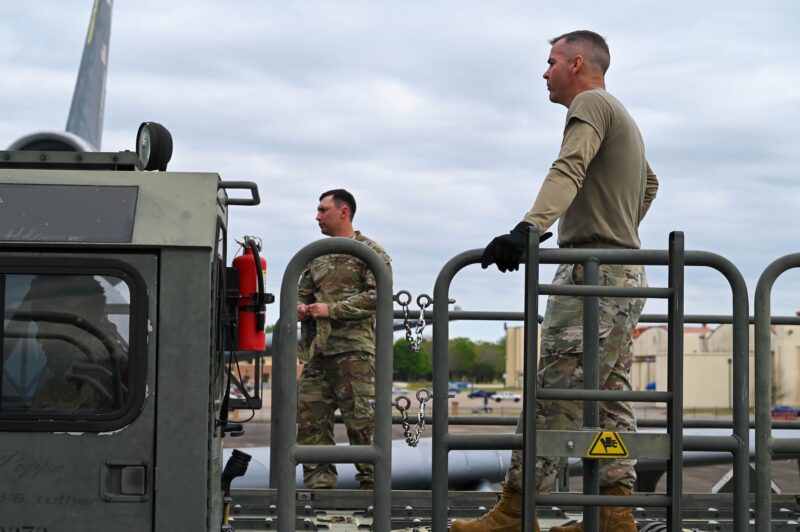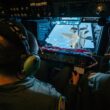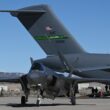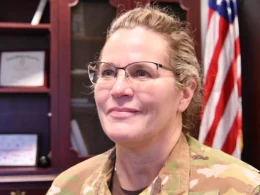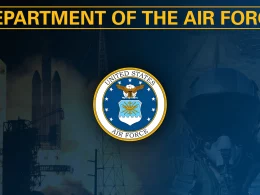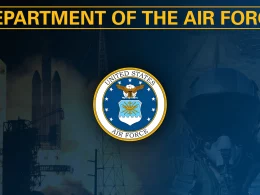MAXWELL AIR FORCE BASE, Ala. —
The 908th Airlift Wing’s 25th Aerial Port Squadron has been creating new ways to train their Airmen over the past year. From procuring equipment to entire aircraft, 25 APS is busy ensuring their Airmen have the tools necessary for the training and development to stay mission ready.
Backstory
As the mission of the 908 AW transitions from C-130H tactical airlift to MH-139A flight training, the mission of the 25 APS remains relatively the same: managing and moving cargo and passengers transported on aircraft.
They make this possible by preparing air cargo and load plans, loading equipment, rigging for airdrops and much more; but, the last of the 908th’s C-130H departed the wing in April 2022, which means they don’t have aircraft readily available to train and work with.
Innovation
In June of 2022, 25 APS leadership sprang into action, coordinating with the 305th Aerial Port Squadron at Joint Base McGuire-Dix-Lakehurst, New Jersey, to receive firsthand mission experience through a two-week immersion with their active-duty counterparts. During this training, they focused on several sections of the aerial port career field including passenger, airfreight and pallet handling.
“It’s been helpful to get hands-on training with different vehicles and facilities,” said Airman 1st Class Angela Haynes, 25 APS air transportation specialist. “We normally wouldn’t have access to these vehicles or even a passenger terminal at our home station, so being here is giving us valuable training. It’s different from reading about it in our career development courses.”
In seeing the value of tactile training, 25 APS leadership contacted the 76th Aerial Port Squadron, assigned to the 910th Airlift Wing, at Youngstown Air Reserve Station, Ohio, to obtain a high-line dock no longer in use.
“A highline-dock is a piece of equipment simulating rolling pallets onto the back/inside of aircraft such as a C-5, C-17 or C-130,” said Senior Master Sgt. Gary Ramey, assistant aerial port manager. “We can fit four pallets instead of just one or two that we did with a next generation small loader and forklift. Having this piece of equipment gives us increased flexibility in building, prepping, and loading or unloading multiple pallets.”
This equipment gives 25 APS the ability to have hands-on training without having immediate access to planes. Training that Master Sgt. Heath Ezelle, 25 APS operations training manager, says is invaluable in a deployed environment.
“When we’re able to provide this kind of training, where they get their hands on it and actually, physically do it and go through the motions of it,” said Ezelle, “it helps when they get there (down range) not to have such a steep learning curve.”
Developing multi-capable Airmen
But, 25 APS did not stop at just getting new equipment for training. They partnered the 349th Air Mobility Wing from Travis Air Force Base, California, to bring in various aircraft types to provide real-world experiences to their Airmen. A C-5M Super Galaxy, the largest plane in the U.S. Air Force, flew on to Maxwell Air Force Base for the 908 AW’s January Unit Training Assembly. 25 APS practiced active on-loading and off-loading equipment to simulate inbound, outbound and in-transit airlift missions. At the same time, they practiced inspecting, weighing and measuring vehicles and support equipment for aircraft loading.
During the March UTA, 349 AMW’s 70th Air Refueling Squadron sent a KC-10 Extender tanker aircraft for 25 APS to practice loading and off-loading cargo from the side of an aircraft, which requires different procedures. This training ensures that 25 APS members have practice loading and off-loading cargo from front, back or side loading aircraft.
“That was the first time I’ve ever loaded from the side body of an aircraft,” said Senior Airman Chad North, 25 APS air transportation specialist. “Every time you get that hands-on experience, it makes it easier. The next time you learn from your mistakes, and you do better and do it safer.”
This partnership with other wings is something that Ezelle says sets 25 APS apart from other Aerial Port Squadrons in the U.S. Air Force Reserve Command. These training opportunities, combined with the 908th’s annual requirements like influenza vaccinations and CPR classes, working in tandem with the wing’s mission, vision and priorities realignment, help develop multi-capable Airman in 25 APS and across the wing.
“We are utilizing other bases and other wings to bring aircraft here to help us get training that we normally would not get,” he said. “I think that puts us above a lot of other Reserve units as far as being prepared… we’ve proven time and time again that when we deploy we are mission ready.”




